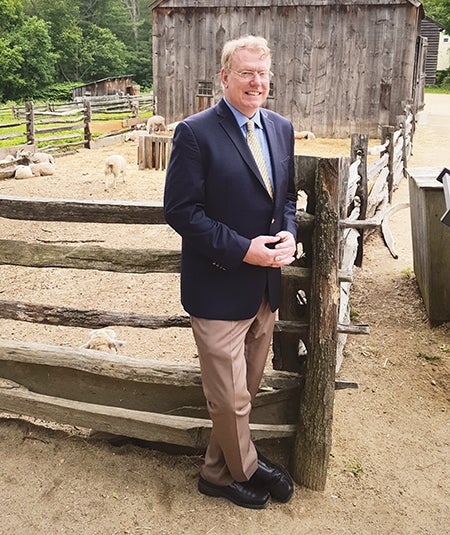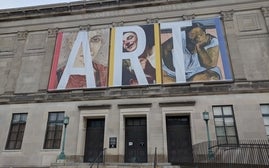
Old Sturbridge Village wants to be weatherproof


When Jim Donahue took over at Old Sturbridge Village in 2007, the previous administration was considering getting rid of the costumed historians, which would have significantly altered the makeup at the 1830s living museum. Ten years into his tenure, Donahue has grown the 71-year-old museum's revenue to $14 million annually, launched a theatrical division, re-opened its hotel and – starting this fall – founded the Old Sturbridge Academy Charter Public School.
Congrats on your 10-year anniversary.
When I first started, I wasn't thinking about how long it would be. My first contract was for three years, but in the first year, the foundation recommended I visit with another large museum, where I met with its CEO. I told her, “I think this will take me three years to fix.” She said, “No, you will be there at least 10 years.”
What generates your $14M in revenue?
We run so many different businesses here: we have the hotel business, we have a restaurant and banquet business, we have a fairly large retail business. The challenge coming into this job is learning all these different businesses with their different set of strategies and conditions.
We are responsible for the management of about $6 million at the museum and about $1 million at the hotel, plus another $7 million at the other divisions. It is not huge, but it is very complicated.
Is $14 million a significant increase?
Five years ago, it was much lower. The restaurant division has gone from $1 million to $2.5 million in my time here. The theatrical division didn't exist when I came here, and this year the total revenue will be around $500,000. The charter school will be a $2.5 revenue project that will pop out of the ground in August. The lodges came in around $600,000 in their first full year of operation in 2014, and now they are around $850,000.
Will revenue keep growing?
We want to grow revenue, and we have been growing it. I could see us being a $20-million-per-year organization.
That said, I would like us to decrease our dependency on volatile revenue lines. I want to grow revenue, but I want to grow the right revenue. I want to grow revenue that is dependable and is somewhat weatherproof.
What makes your revenue volatile?
For an outdoor museum, the weather can wreak havoc. In my 10 years, we've had a tornado come through the back of the campus; we've had a snowstorm in October that knocked out the power for a week during our busiest month; we've had teeming rains, snow, extreme heat.
The challenge outdoor history museums face is volatility in their revenue plans. A perfect example is this past May, which was cold and wet, and impacted people's decisions to go outside. There are a lot of factors affecting customers wanting to come to the museum we have no control over. We have to decrease our dependency on those revenue lines and increase the dependency on lines we have more control over.
We want to grow front-gate revenue, but we want to reduce our dependency on it, so we are budgeting for less.
What would be dependable revenue?
The wedding business at the village has been really good for us. Weddings are weatherproof as people get married whether it is rainy or sunny. They are generally economy-proof, as you are going to get married even if we are in a recession.
The one year I was wrong about that was 2013 when no bride wanted to get married in a year that ended in 13. But, during my lifetime, that will only be a concern once. It will be some other president's problem in 2113. I'm doing 10 years, not 110 years.
What will your next 10 years bring?
Hopefully, the next 10 years will bring more visitors, more programs, continued emphasis on costume interpretation. I firmly believe having historians in costume is a distinguisher for the village, even though it is expensive. Unlike when you go into an art museum, we don't have painting and statues; we have people requiring salaries, pensions and health insurance.
We have to protect that because our visitors expect to come to the museum and talk with people in costume. We allow our visitors to step into the painting, and it takes a person to do that.
I hope my administration's legacy will be that.
This interview was conducted and edited for length and clarity by Brad Kane, WBJ editor.
Video













0 Comments